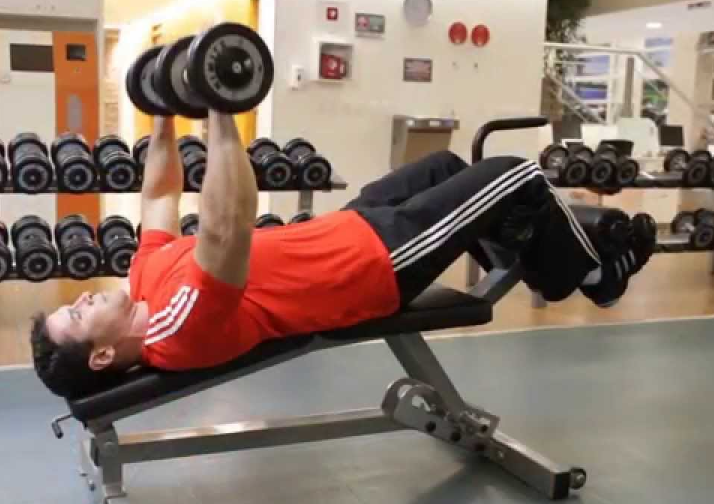BOURSESSENEGAL – The decline bench press is a powerful exercise that can enhance your upper body strength, particularly targeting the lower pectoral muscles. By incorporating this exercise into your routine, you can achieve better muscle definition and overall fitness. In this comprehensive guide, we’ll dive deep into the benefits, techniques, and variations of the decline bench press. Let’s explore how to maximize your workout and make the most of this effective movement.
Understanding the Decline Bench Press
What is the Decline Bench Press?
The involves lying on a bench that’s angled downward, which allows for a unique range of motion compared to flat or incline bench presses. This positioning emphasizes the lower chest, triceps, and shoulders. Whether you’re a beginner or a seasoned lifter, mastering this technique can significantly improve your chest workout routine.
Why Include Decline Bench Press in Your Routine?
Integrating the decline into your workout brings several benefits:
- Targeted Muscle Engagement: It specifically engages the lower portion of your pectorals, which flat and incline presses may not hit as effectively.
- Enhanced Strength: Regularly performing this exercise can improve your overall pressing strength, allowing you to lift heavier weights in other movements.
- Variety in Workouts: Adding variety keeps your workouts fresh and can prevent plateaus, helping you stay motivated and challenged.
How to Perform the Decline Bench Press Correctly
Step-by-Step Guide
- Set Up the Bench: Adjust your decline bench to an angle of about 15 to 30 degrees. Secure your feet under the foot pads to stabilize your body.
- Position the Barbell: Load the barbell with an appropriate weight. Make sure the bar is directly above your chest when you lie down.
- Grip the Bar: Use a grip slightly wider than shoulder-width. Ensure your wrists are straight and your elbows are tucked in as you lift the bar.
- Lift Off: Press the barbell up and slightly back to align it over your shoulders. This position is crucial for safety and effectiveness.
- Lower the Bar: Inhale and lower the barbell in a controlled manner until it touches your chest. Your elbows should form about a 75-degree angle.
- Press Up: Exhale as you push the barbell back up to the starting position. Focus on engaging your chest throughout the movement.
Key Tips for Safety and Effectiveness
- Warm Up: Always warm up with lighter weights or dynamic stretches to prevent injury.
- Use a Spotter: When lifting heavy, it’s wise to have a spotter for safety.
- Focus on Form: Prioritize good form over lifting heavier weights. This approach helps prevent injuries and promotes muscle growth.
Variations of the Decline Bench Press
1. Decline Dumbbell Press
Using dumbbells instead of a barbell allows for a greater range of motion and can help in correcting muscle imbalances. It also engages stabilizing muscles more effectively.
2. Decline Close-Grip Bench Press
This variation targets the triceps more intensely. It’s excellent for developing upper body strength and muscle mass.
3. Decline Bench Press with Bands
Incorporating resistance bands can increase the difficulty of the exercise and provide constant tension on the muscles throughout the movement.
Integrating Decline Bench Press into Your Workout Routine
Creating a Balanced Upper Body Workout
When planning your workouts, aim for a balanced approach. Include:
- Flat Bench Press: For overall chest development.
- Incline Bench Press: To target the upper chest.
- Decline Bench Press: To focus on the lower chest.
This combination ensures that all areas of your chest are engaged, promoting symmetry and strength.
Example Workout Routine
Here’s a sample upper body routine featuring the decline bench press:
- Warm-Up: 5-10 minutes of light cardio and dynamic stretches.
- Flat Bench Press: 3 sets of 8-10 reps.
- Incline Dumbbell Press: 3 sets of 8-10 reps.
- Decline Bench Press: 3 sets of 8-10 reps.
- Push-Ups: 3 sets to failure.
- Dumbbell Flyes: 3 sets of 10-12 reps.
Recovery and Rest
Don’t underestimate the importance of recovery. Muscles grow and repair during rest, so allow at least 48 hours before targeting the same muscle group again. Incorporate stretching and hydration to promote recovery.
Common Mistakes to Avoid
1. Poor Form
Maintaining proper form is essential. Avoid flaring your elbows or lifting your feet off the ground. Both can lead to injury.
2. Lifting Too Heavy
Start with a manageable weight. As you gain strength and confidence, gradually increase the load. Prioritize quality over quantity.
3. Neglecting Other Muscle Groups
Focusing solely on chest workouts can lead to muscle imbalances. Incorporate exercises for your back, shoulders, and arms to achieve overall strength and stability.
Conclusion
Incorporating the decline bench press into your workout routine can lead to impressive gains in upper body strength and muscle definition. By understanding the proper techniques, variations, and how to integrate this exercise effectively, you can maximize your training efforts. Remember, consistency and proper form are key to success.
Now that you’re equipped with the knowledge to perform the decline safely and effectively, it’s time to hit the gym and put these tips into action. Enjoy the journey toward a stronger, more defined upper body
REFERENCE : https://www.health.com/



